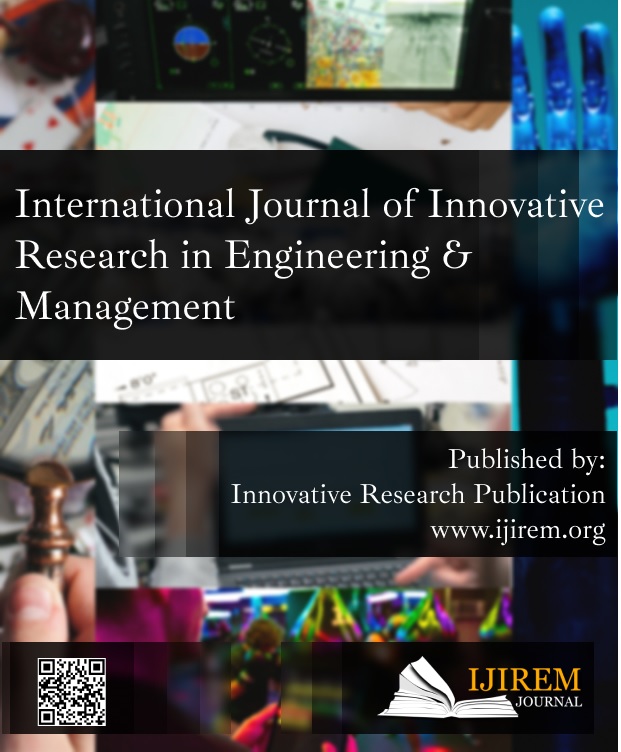A Study of Occupational Stress on Doctors during Covid 19 Pandemic with Reference to North West Delhi
Keywords:
Coronavirus, Doctor, Health Care, Quarantine, StressAbstract
This research paper aims to assess the occupational stress among professional physicians whereas engaging the COVID-19 therapies in the research location. The Coronavirus pandemic in India is part of a worldwide pandemic caused by the brutally acute pulmonary syndrome virus. Physicians and the general public have expressed concern, grief, fear, and sadness as a result of the COVID-19 eruption. Doctors are more likely then the general population to suffer from a variety of mental diseases. All main and tertiary data were used in the inquiry. Secondary data was gathered on COVID-19 diseases and physician treatments. The important information obtained from clinicians relates to the COVID-19 treatment. The study has a sample size of 353. The responses were compiled into excel sheets, which were then imported into SPSS program versions 21 for analysis. For evaluating the framed hypothesis, the researchers used simple statistical distribution and a t-test. According to the study, the doctors used COVID-19 treatment for the initial 6 weeks, and % of the professionals had high stress levels. The study also found that when government hospital doctors started using COVID-19 therapy in hospitals, their work culture altered dramatically. According to the poll, government hospital doctors were unable to maintain a work-life balance. While participating in COVID 19 treatments in the research area, the doctor has had a significant impact on their personal lives and causes job stress.
Downloads
References
Y. Cheng, W. Wei, Y. Zhong, and L. Zhang, “The empowering role of hospitable telemedicine experience in reducing isolation and anxiety: evidence from the COVID 19 pandemic,” Int. J. Contemp. Hosp. Manag., 2021, doi: 10.1108/IJCHM-07-2020-0786.
H. Shen, M. Fu, H. Pan, Z. Yu, and Y. Chen, “The Impact of the COVID-19 Pandemic on Firm Performance,” Emerg. Mark. Financ. Trade, 2020, doi: 10.1080/1540496X.2020.1785863.
C. Phelps and L. L. Sperry, “Children and the COVID-19 pandemic.,” Psychol. Trauma Theory, Res. Pract. Policy, 2020, doi: 10.1037/tra0000861.
N. Greenberg, D. Weston, C. Hall, T. Caulfield, V. Williamson, and K. Fong, “The mental health of critical care and anaesthetic staff during COVID-19,” medRxiv, 2020.
R. Capps and J. Gelatt, “Barriers to COVID-19 testing and treatment: Immigrants without health insurance coverage in the United States,” Migr. Policy Inst., 2020.
N. B. Dogan and B. Kilicarslan, “The psychological impact of COVID-19 pandemic on cardiologist and their ST segment-elevation myocardial infarction treatment strategies,” Anatol. J. Cardiol., 2020.
A. Vasireddy, “Sounding circles - a grassroots wellbeing initiative for junior doctors during the pandemic,” BJOG An Int. J. Obstet. Gynaecol., 2021.
V. Ceri and I. Cicek, “Psychological Well-Being, Depression and Stress During COVID-19 Pandemic in Turkey: A Comparative Study of Healthcare Professionals and Non-Healthcare Professionals,” Psychol. Heal. Med., 2021, doi: 10.1080/13548506.2020.1859566.
I. Podder, K. Agarwal, and S. Datta, “Comparative analysis of perceived stress in dermatologists and other physicians during national lock-down and COVID-19 pandemic with exploration of possible risk factors: A web-based cross
sectional study from Eastern India,” Dermatol. Ther., 2020, doi: 10.1111/dth.13788.
J. E. Arnetz, C. M. Goetz, B. B. Arnetz, and E. Arble, “Nurse reports of stressful situations during the COVID-19 pandemic: Qualitative analysis of survey responses,” Int. J. Environ. Res. Public Health, 2020, doi: 10.3390/ijerph1721812
